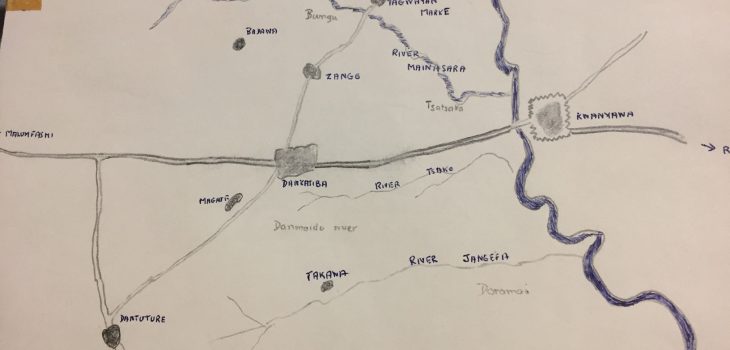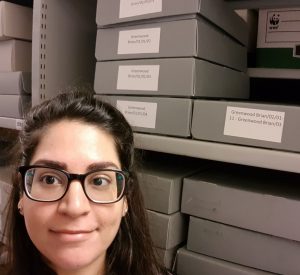As part of my Masters in Archives and Records Management at UCL, I had the pleasure of being assigned my 3 week part-time placement at the London School of Hygiene and Tropical Medicine Archives and was given the opportunity to join the team and see how archives function at a university level.
My time at the School has been fantastic – I was first assigned a collection that was donated to the Archives by Professor Sir Brian Greenwood following the publication of an article of his in 2017 on his earlier career spent in northern Nigeria. Professor Greenwood’s early days were spent in the Malumfashi District of the Katsina state in Nigeria and most of his work revolved around attempting to find a cure for Guinea Worm.
As it was my job to catalogue this collection according to archival standards I made sure to read up on Guinea Worm and better understand the ailment and its history in the medical field. In 2018 it is thankfully nearing extinction and rapidly disappearing with only a handful of cases found in humans in isolated parts of Chad, Mali, South Sudan and Ethiopia, with only 30 cases found worldwide as a whole in 2017. The comparison of the early 80s, where they were 30 million cases, to present day, where there were zero reported cases in South Sudan in well over a year, is staggering to say the least.
Professor Greenwood’s work was at the early stages of creating a better understanding of the parasite, how long it lived in the human body and all its effects. His work contributed to the vital understanding of how the cycle would repeat itself when people placed their infected limbs in communal bodies of water. Outbreaks of Guinea Worm would peak in the rainy season when people were farming, and its impact on the community meant patients were too immobile as a result to even visit hospital. This also meant no records were being created and Professor Greenwood was one of the first to do so, thanks to anthropologist Murray Last. The Guinea Worm Data collection is not only an excellently organised set of research data, but also a glimpse into a point of medical history that may have been forgotten. I had the pleasure of sitting down with Professor Greenwood to discuss the collection and the early stages of his career in immunology. This was truly an invaluable experience.
My time at LSTHM did not only consist of cataloguing. I had the opportunity to go on an appraisal trip with Claire Frankland, Assistant Archivist, to visit the Malaria Consortium.
As they are moving from their current premises and have a longstanding tie with the School and its staff, we had the chance to see the papers they intend to donate to us. While the papers are largely administrative, what has made this donation particularly interesting is the presence in them of the renowned female academic Dr Sylvia Meek, about whom there is currently little in the archives. What otherwise could be seen as papers of niche interest, can be interpreted entirely differently when one approaches them from a different perspective!
I learnt a lot on my placement about cataloguing procedures and how a University archive functions within Higher Education, but also about the heritage of the School itself, the fantastic collection and to always remind myself to approach matters from various points of view!










